Some people responding to my celebration of NBA star Jonathan Isaac’s decision to stand during the national anthem while all around him took to their knees have (rightly) raised questions about how my post fits with Colin Kaepernick, the quarterback in the NFL who first took a knee during the national anthem in protest against racism in the United States.
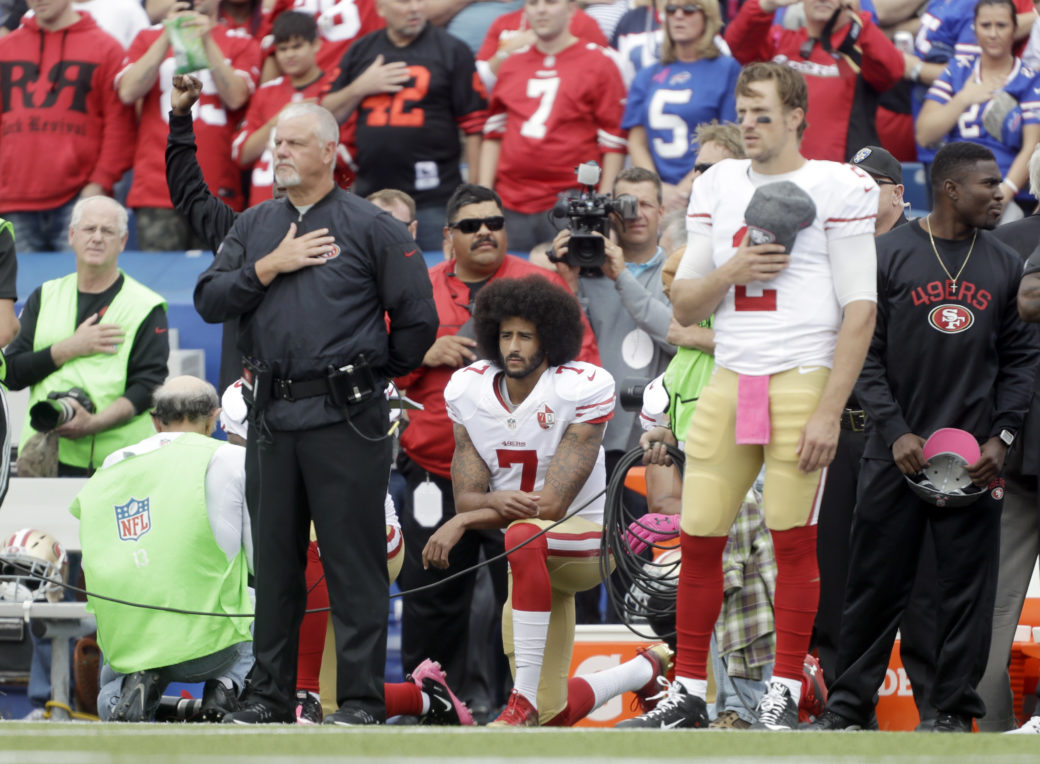
Kaepernick’s actions developed quietly in the pre-season, and became more public and intentional as a result of then Republican candidate, now President, Donald Trump’s reaction to his actions. Trump has a long history of, at best, courting the white supremicist vote for his own political ends, not only through dog whistling tweets and soft responses to fascism (including his response to Kaepernick’s kneeling, but also around the NASCAR “noose” story earlier this year), and at worst, being a white supremicist by conviction.
In the washup of his decision to take a knee, Kaepernick said: “If they take football away, my endorsements from me, I know that I stood up for what is right.” Love it. Others didn’t. His actions were framed as actions against the Flag, against the veterans, against the civic religion of the United States — they were framed as a desecration of sorts. But, for Kaepernick, they were simply an expression of his convictions that something in the United States had to change before he could feel like he belonged.
While, in my last post, I suggested there’s a parallel between ‘taking a knee’ and adopting a posture of submission, or worship (the greek word proskuneo), one can also adopt a posture of idolatry or worship by standing for a liturgical moment in the cult of civic religion. Kneeling during the anthem can also be a rejection of an alternate vision of the good; an alternate idolatrous regime. Our bodies are instruments of worship, and their postures, especially habitual ones (like kneeling, or standing), form us.
Since my post about Jonathan Isaacs, Israel Folau, no stranger to not bending the knee to idolatrous social pressures, has also drawn the ire of the Twittersphere for failing to kneel before an English Rugby League game, where he plays for a French team. The way new shibboleths emerge, and the mobs who are willing to conduct spontaneous heresy tribes with cancellation looming large is one of the more visible expressions of how deeply religious our hyper-secular society has become; and how much we’re all aggressive monotheists rather than pluralists. The overlap, or faithful presence, of Christians within these movements is an interesting test of one’s political theology.
While the present pressure to ‘take a knee’ feels implicitly, if not explicitly, religious — a call to give bodily expression to convictions about truth and goodness, where those who don’t participate are expressing a rejection of an orthodoxy that leaves the crowd incredulous — the roots of the ‘taking a knee’ movement were also, essentially, Christian. In that Kaepernick is, by all accounts, a man of deep Christian convictions. His decision to take a knee in the face of injustice was a decision not to stand for the values of a country, or its flag, while that country and flag were symbols of oppression; of a sort of beastly Babylonian imperialism. As James K.A Smith puts it in Awaiting The King, politics is inherently religious, he says: “There is something political at stake in our worship and something religious at stake in our politics.”
In Smith’s system, which pays attention to embodied practices as ‘liturgies’ aimed to form us with a vision of the good life, the act of standing for the national anthem is not neutral, it is a civic liturgy. Smith says, of the modern civic religion: “It shouldn’t be surprising when an institution that wants you to “pledge allegiance” is not happy with anything less than your heart. In this case, a liturgical lens works like a cultural highlighter that draws our attention not just to the “laws of the land” or the decisions of supreme court justices but to the rites interwoven in our public life together—the rituals and liturgies that inculcate in us a national myth and habituate in us an unconscious allegiance to a particular vision of the good.” Our Australian equivalent is the civic cultic apparatus that has emerged around ANZAC Day and its mythology; a mythology that shapes the collective Australian psyche (and psyche is just the Greek word the Bible uses for soul). Smith suggests his lens is a useful one because it invites us to “be attentive to the ways we are formed by the rites of democracy and the market, not just informed by their institutions.“
Whether one stands or kneels during the national anthem is now loaded up as a civic-religious rite; one is either perceived as joining in and participating in the civic cult, or perceived as desecrating that valuable thing by participating in an alternative religion. And as we intentionally use our bodies in either direction, according to Smith, we are being formed towards some vision of life — then, when the Twitter voices pile on to either celebrate or condemn our actions, that formation process goes into hyper-drive. Our formation is amplified by the filter bubbles we belong to and their reinforcing interpretation of our embodied acts.
How are we meant to live, as Christians, when no public territory is religiously neutral? By being attentive, discerning, and acting with intent as people who belong to a different polis; the kingdom of God. As Smith puts it in his fancy phraseology: “our political engagement requires not dismissal or permission or celebration but rather the hard, messy work of discernment in order to foster both ad hoc resistance to its ultimate pretensions and ad hoc opportunities to collaborate on penultimate ends.” This is quite similar to what James Davison Hunter calls being a “faithful presence,” and is also the sort of leadership Edwin Friedman calls for in A Failure of Nerve, that of being a differentiated non-anxious presence in an increasingly anxious and fractious body politic. We’re to know who we are, such that we can resist being deformed or conformed to the patterns of this world, while seeking to be transformed, and to transform the world around us according to the picture of the kingdom of God revealed to us in Jesus.
Jonathan Isaac decided to not kneel, not because he rejects the idea that black lives matter, but so that he might make the case that racial justice won’t come through kneeling, or perhaps even politics, without the Gospel. His decision was an attempt to be a faithful presence, one differentiated from the world around him and its conforming patterns. In my piece unpacking his actions, celebrating them even, I hoped to qualify both that Christians can faithfully be present, kneeling even, in protest movements, and faithfully present in empires (think Daniel under Nebuchadnezzar in Babylon, and then under Darius, think Joseph in Egypt, think Erastus in Corinth). It wasn’t a problem for any of these individuals to contribute to the common good in an empire, despite the idolatry inherent in these empires, but there is a pressure that comes with this sort of presence; a pressure to bend the knee to idolatrous systems, rather than to king Jesus.
Sometimes this sort of faithful presence isn’t just about joining some sort of pre-existing empire, or political cause, Christians can even start, or lead, protest movements as expressions of our convictions about the nature of the kingdom of God, and the nature of beastly kingdoms set up in idolatrous opposition to Jesus. When Kaepernick first took a knee, the symbolic meaning of his refusal was clearly a repudiation of empire consistent with his faith. One of his (many) Christian tattoos features the words of Psalm 27:3, “Though an army besiege me, my heart will not fear though war break out against me, even then I will be confident.” His taking a knee, surrounded not just by players, but an empire, that first saw this as an attack, was an act of courage, coming from convictions he owns as a follower of Jesus.
Both Kaepernick’s kneeling, and Isaac’s standing, were acts of faithful presence. Like the paradoxes in Proverbs in the Bible, where the wise person either answers a fool according to their folly, or does not, the vexing moral issue of our time is captured, in some form, in the question ‘to knee, or not to knee’?
Does one take a knee in solidarity with a brother who sees the idolatrous impact of empire on his people, who refuses to put the nation state — the empire — in the place of God?
Or does one stand, because at some point the act of kneeling has become synonymous with alternative forms of empire, and a religious social pressure just as opposed, ultimately, to the truth of the Gospel as that which it kneels against?
The key is that whatever you’re attempting to do as a faithful presence, your posture reveals a faith in Jesus as king, not in the alternatives; which will mean freedom to do either, and will require charity from within the body of Christ to be directed at those exercising wisdom and freedom in a different direction; not an attempt to eradicate our fellow Christians as repugnant others in a culture war.
This ethical conundrum became a little less clear cut when Kaepernick’s symbolic act was co-opted by two essentially religious groups. First by Nike, in order to sell more shoes through that insidious form of capitalism. This sort of capitalism is the kind where a multi-national company that has a history of using oppressed people to make shoes in the third world for peanuts, can simultaneously make a poster boy out of a member of an oppressed group who took a costly stance on racism to sell more shoes. It’s here that we might note that what often gets called ‘cultural marxism’ is really just another lever pulled by the capitalist machine to sell goods to a different audience, an idea you can dig into further in The Eucatastrophe’s episodes on cultural marxism. And second, when it was co-opted by people wielding essentially the same but reversed, political power against the (racist) empire as an expression of a culture war with a merchandising arm. Those campaigning against racism, and for the dignity of black lives, are certainly more aligned with God, as creator, and the kingdom of God, as the ideal, than those seeking to uphold white supremacy through systemic racism, but there’s an insidious idolatrous agenda, built on worldly power being applied without God in the picture, co-opting this kneeling campaigning, and twisting potential solutions to racism away from the truth, and towards the idolatrous status quo, just with different labels. Whether BLM or Nike, whether one kneels or stands, as in so much modern politicking, the forces of ‘the market’ are in the mix attempting to make more money through social and political posturing. One wonders who is making and selling the shirts that NBA players are wearing during the anthem…
Modern capitalism (surveillance capitalism or otherwise) is just like modern black-hat Russia in its manipulation of discord in western elections; it doesn’t matter which side wins, so long as the fight is happening in a destabilising way, if that happens, Russia wins. Modern capitalism is like the arms dealer in the culture war, selling polarising political-religious iconography to both sides, turning a buck, growing the market, conscripting us not to our political theology, but to Mammon. How dare Isaacs not wear the Black Lives Matter T-Shirt (he did still wear his Orlando Magic shirt, which you can buy in the gift shop for…). Mammon doesn’t care so long as you buy your political merch and wear it loudly in performance of your virtue; the louder and more obnoxiously the better, in order to promote an equal, but opposite, reaction (and more sales).
When the market turns activism into a way to make a buck or two, we should be doubly suspicious of its religiosity; these acts then serve the twin idols of our vision of the political good (our idealism, or empire), and the economic machine. Black Lives Matter is increasingly a monetised social media phenomenon with merch. Kaepernick’s kneeling became a Nike campaign putting “overt” into religious overtones.

Now, to not kneel, but to stand, is its own act of rebellion, or subversion, in the face of another conforming pattern of this world; and it’s unclear whether by standing one is upholding the idolatry of empire, rejecting the capitalisation of activism, rejecting an anti-racist political movement that is, itself, potentially idolatrous, or simply standing as an expression of faith in an alternative kingdom, with its king.
And here’s where Smith’s diagnosis of the modern ‘political field’ is useful; global capitalism means politics isn’t just about the government; it’s not just about a political empire, but also an economic one, our governments increasingly become pawns in an increasingly global idolatry; the worship of Mammon, and the church, or kingdom of God, stands in opposition to all these forces. Smith describes this, again this is from Awaiting The King:
“If the church is a “public” that stands, in some sense, counter to the pretensions of the earthly polis, we can’t narrowly mistake this as a critique targeted only at the state because, in the current configuration of globalized capitalism, the state has in many ways been trumped by the forces of the market and society. Wannenwetsch points out that in Western societies—and globalized societies more and more—the economy functions as a “structure-building force” that shapes everything. The market now constitutes “the inner logic” of society itself: the dynamics of society are “moulded by the laws of the market: as a contest between participants competing for an increase of their shares.” This coupling of market forces and the crowd’s demand for publicity means that everyone dreams of monetizing their Instagram feed. And that effectively becomes the ethos of a society.”
This ethos is on display in a protest movement that is essentially performed for photo opps, and that arose from social media activism, using a hashtag. How can we possibly know if every knee publicly bent is a knee privately committed, as part of a body, to the renewal of society around the issue of race. How many knees bent in public, and knees belonging to people whose behaviours and ideologies in private, or out of the camera’s gaze, are given to maintaining the status quo? Isaacs was right to emphasise the need not just for a change of actions, but of hearts.
How one decides what to do when such pressure is applied, and the stakes so high, is an interesting shibboleth test for life in the modern world. Navigating this sort of climate, where nobody is prepared to give an inch in the culture war, but all acts are interpreted through a hyper-political lens, is almost impossible, and certainly crippling. The key for us Christians is to use our bodies in ways that align with our story — our understanding of their God-given and redeemed purpose; our trajectory, or, as Smith puts it, our ‘teleology,’ which “is an eschatology: a hope for kingdom come that arrives by the grace of providence and doesn’t arrive without the return of the risen King. And this changes everything. A teleology that is at once an eschatology will be countercultural to every political pretension that assumes either a Whiggish confidence in human ingenuity and progress or alarmist counsels of despair. But precisely because Christian eschatology is a teleology of hope, it will also run counter to cynical political ideologies of despair that reduce our common life to machinations of power and domination. Furthermore, a Christian political theology attuned to eschatology will run counter to a kind of postmillennial progressivism to which the so-called justice generation sometimes seems prone…”
Any action, or story, that does not share this teleology or eschatology is essentially idolatrous, which isn’t to say we can’t participate in public alongside people who do not share our worship of Jesus, but simply that we should be careful that the use of our bodies is aligned to the truth, not to truncated visions of what it means to be human, and how to solve the problems we’re confronted with in a world marred by sin.
So, Christian. Kneel in the protest movement against racism, or stand against solutions to racism that don’t include king Jesus. Do so as a faithful expression of obedience to your Lord Jesus. There’s freedom here, and this is a course that requires wisdom — but don’t be so co-opted by worldly agendas whether of ‘political empire’ or ‘economic empire’ (and really, these are just two sides of ‘Babylon’) that you lose sight of what is ultimate. Don’t crucify your brothers and sisters for choosing a political action that is different to yours, but celebrate when ambassadors for Jesus are able to be a faithful presence in any community, pursuing the goodness, truth and beauty of the kingdom.
Because remember, ultimately, there is no choice about bowing the knee; we’re all going to take a knee as we participate in various non-ultimate realities here and now, and those realities are going to be religiously motivated economies, like Egypt, Babylon, and Rome were, but every knee will one day bow to Jesus. And it’s his kingdom that counts, and his rule that offers a solution to the problems of sin, including racism. This is part of that ‘eschatology’ — that future hope — that Smith talks about, a future secured through the death, resurrection, ascension, and future return of Jesus:
Therefore God exalted him to the highest place
and gave him the name that is above every name,that at the name of Jesus every knee should bow,
in heaven and on earth and under the earth,
and every tongue acknowledge that Jesus Christ is Lord,
to the glory of God the Father. — Philippians 2:9-11
As you choose who or what to bend your knee to now, bend it to him. It’s good training.

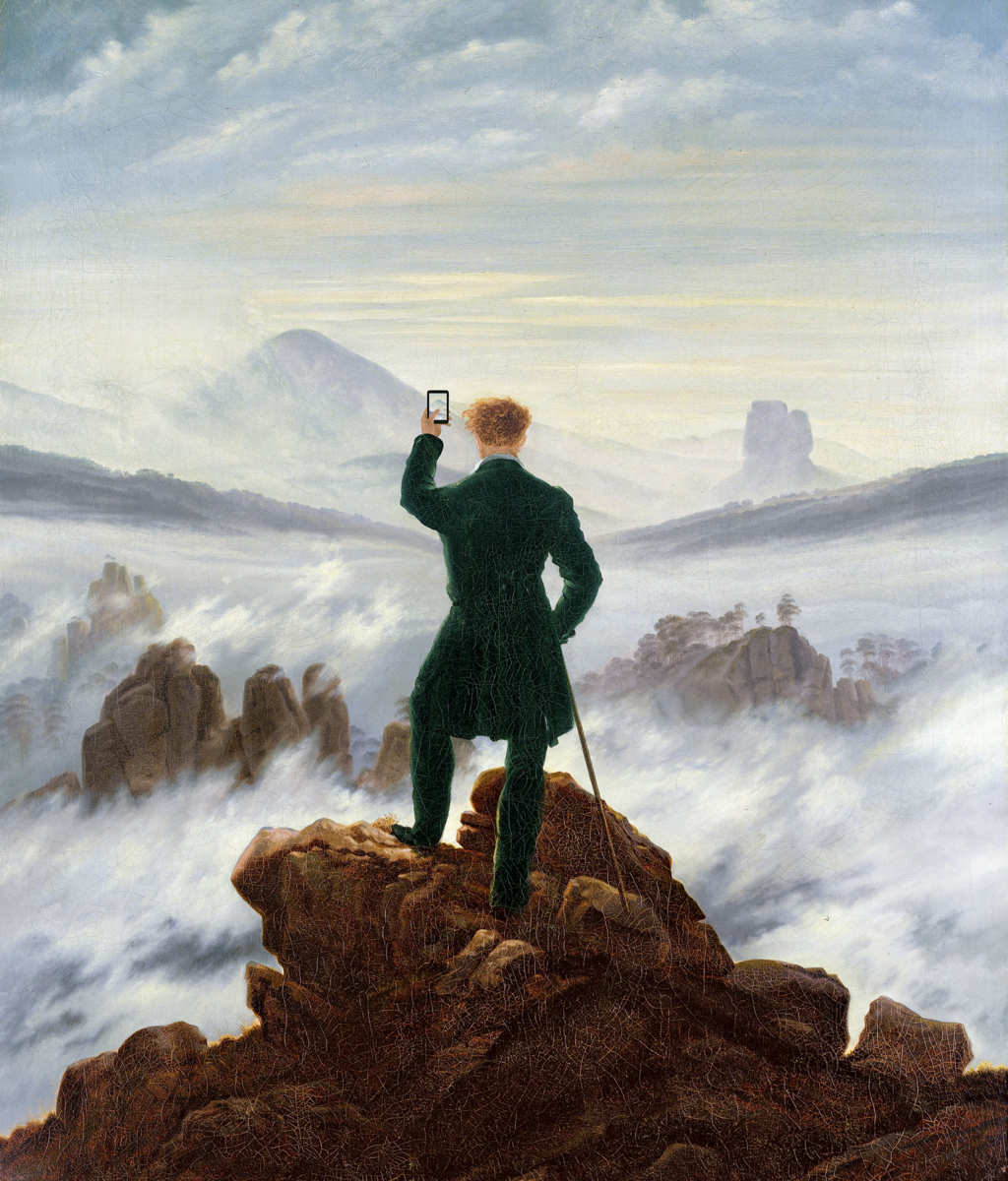
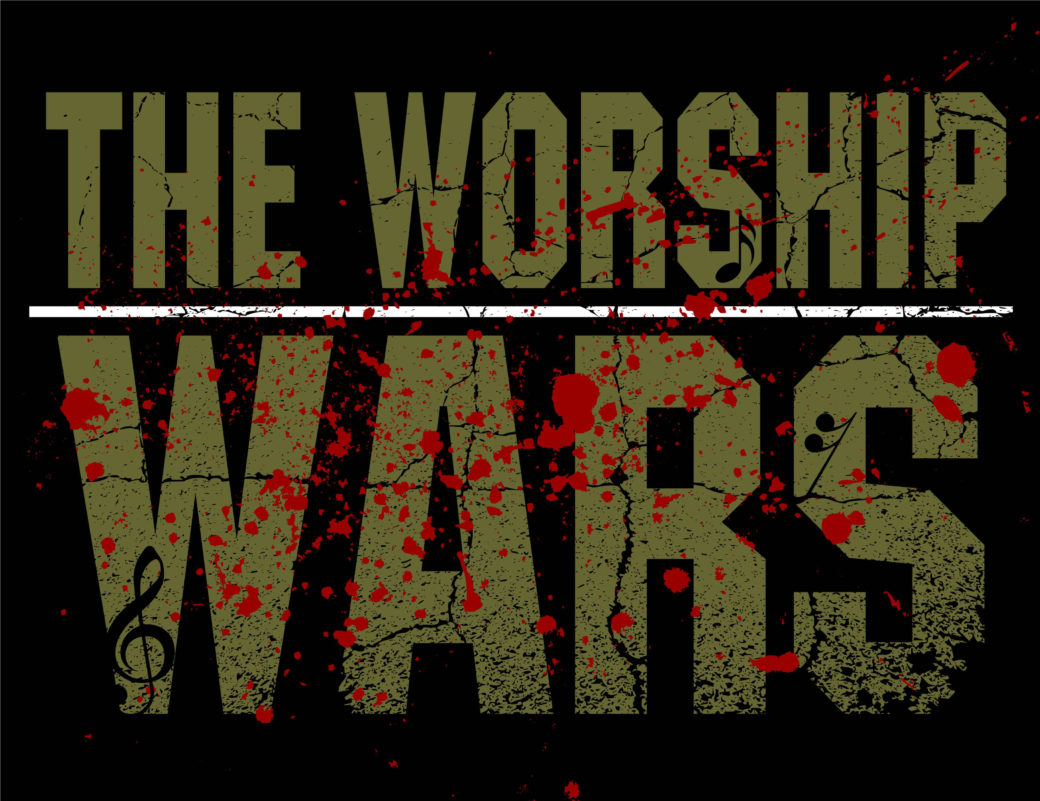
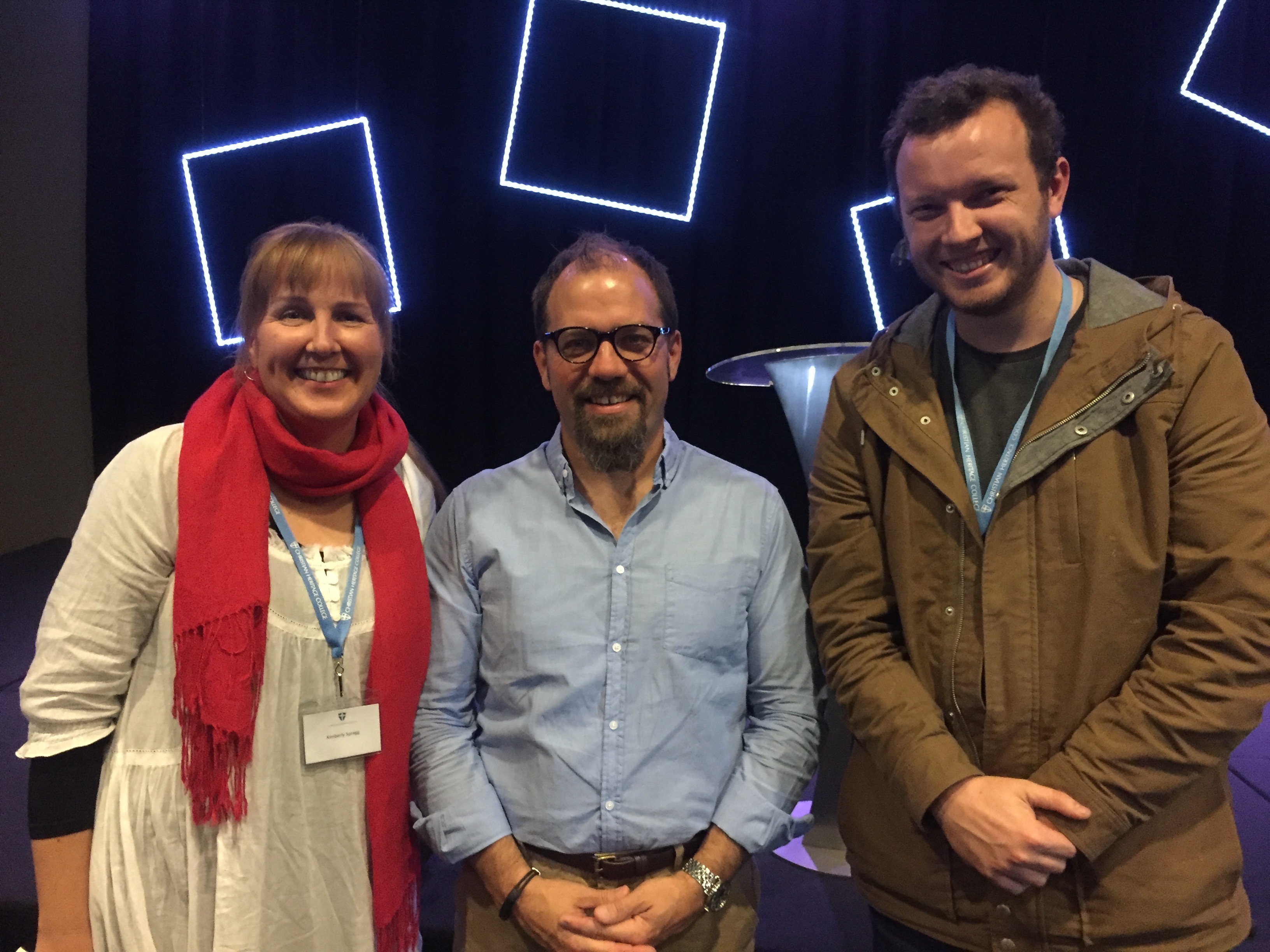
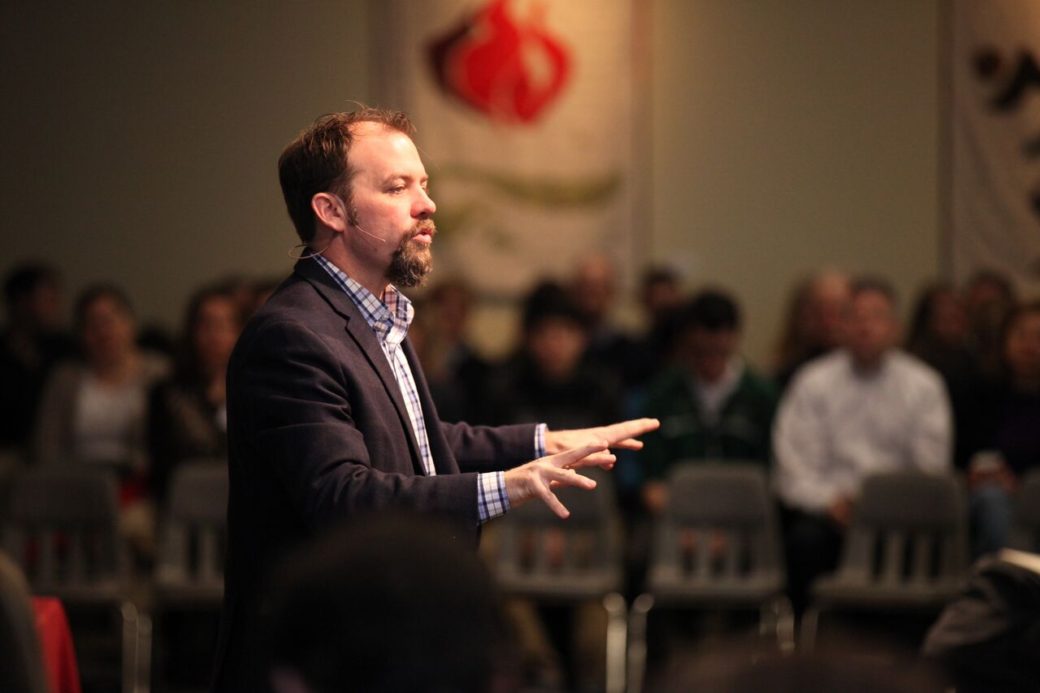
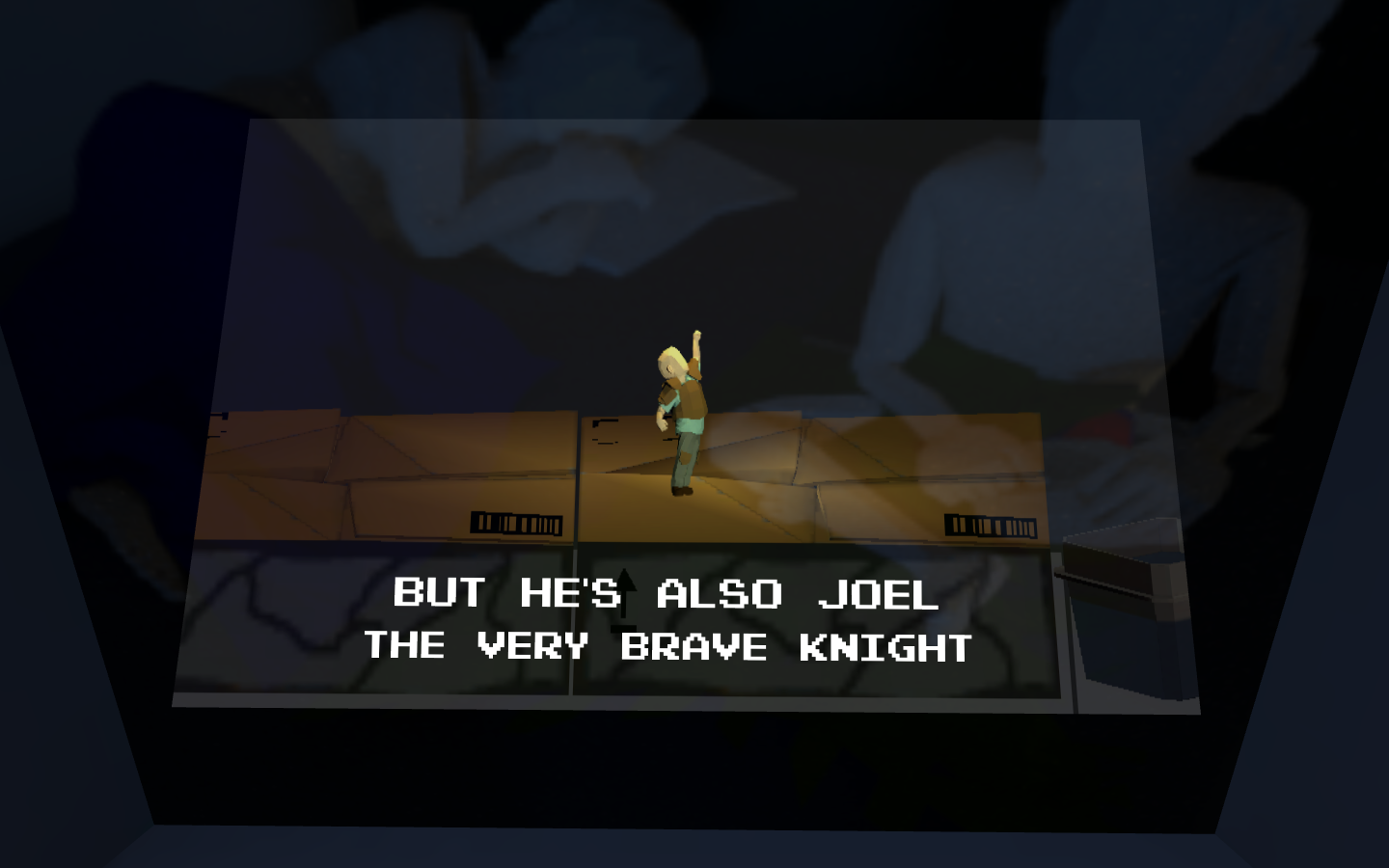

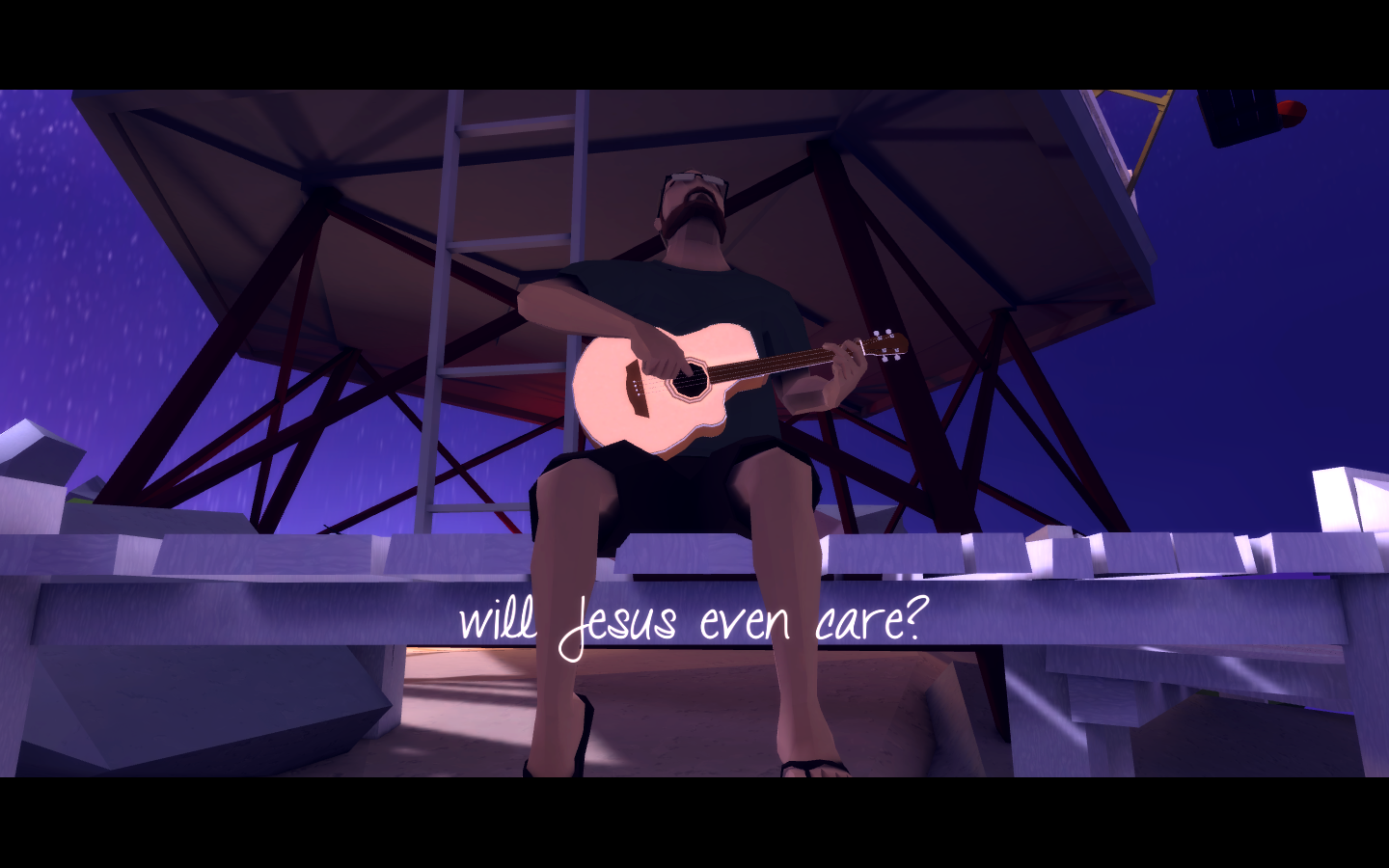



Why generous pluralism is a better ideal than idealistic purism and provides a better future for our broad church (or why I resigned from GIST)
This week I resigned from a committee I’d been on since 2011, I was at the time of resigning, the longest serving current member. I resigned because I did not and could not agree with the statement the committee issued on the same sex marriage postal survey, and I wanted to freely and in good faith publicly say why I think it is wrong, and to stand by my previously published stance on the plebiscite.
In short, I did not think the committee’s paper fulfilled either aspects of its charter — it is not ‘Gospel-hearted apologetics’ in that there is nothing in it that engages particularly well with the world beyond the church in such a way that a case for marriage as Christians understand it might convince our neighbours of the goodness of marriage, or the goodness of Jesus who fulfils marriage in a particular way; nor do I believe it effectively equipped believers to live faithfully for Jesus in a secular society; instead, it equipped believers who were already going to vote a particular way to keep voting that way and to have some Gospel-centred reasoning to do so. I’m not convinced the way it encourages people to vote or speak about that vote, or understand the situation grapples well with our secular context; as someone not committed to a no vote already, I found the paper unpersuasive even after a significant review process.
But there was also a deeper reason for my resignation (resigning over just one paper would not be a sensible course of action) — this paper reflects a particular approach to political engagement in a fractured and complicated world that I do not support, and there was no evidence the committee would adopt an alternative strategy. I resigned because the committee failed to practice the generous pluralism that I believe the church should be practicing inside and outside our communities (on issues that aren’t matters of doctrine — there’s a difference between polytheism and pluralism). I had asked for our committee to put forward the views of each member of the committee rather than the majority, because the committee’s remit is to ‘equip believers in our churches to engage in Gospel-hearted apologetics’ and ‘to live faithfully for Jesus in a secular society’ — and I believe part of that is equipping believers to operate as generously as possible with people we disagree with in these complicated times.
The statement issued by the committee is no Nashville Statement; it is an attempt to be generous to those we disagree with, without offering a solution to a disagreement that accommodates all parties (or even as many parties as imaginable); it is also an idealistic document, and so as it seeks to push for an ideal outcome it represents a failure to listen and engage well with other people who hold other views — be they in our churches, or in the community at large. It is this failure to listen that led me to believe my energy would be better spent elsewhere, but also that leads me to so strongly disagree with the paper that I am publishing this piece.
This is not, I believe, the way forward for the church in a complicated and contested secular world; it will damage our witness and it represents the same spirit to push towards an ideal ‘black and white’ solution in a world that is increasingly complicated. I’m proud of this same committee’s nuanced work on sexuality and gender elsewhere, and don’t believe this paper reflects the same careful listening engagement with the world beyond the church and the desires of the people we are engaging with (and how those desires might be more fulfilled in knowing the love of Jesus). By not understanding these desires (not listening) our speech will not be heard but dismissed. This paper is meant to serve an internal purpose for members of our churches (so to persuade people to vote no), but it is also published externally on our website without any clarification that it is not to be read as an example of Gospel centered apologetics, so one must conclude if one reads it online, that this is a paper that serves both purposes of the committee.
I’m not the only voice speaking out in favour of pluralism, nor am I claiming to be its smartest or best spokesperson. John Inazu’s book Confident Pluralism and his interview in Cardus’ Comment magazine gave me a language to describe what I believe is not just the best but the only real way forward in what Charles Taylor calls our ‘secular age’ — where the public square is a contested space accommodating many religious and non religious views. If we want to resist the harder form of secularism which seeks to exclude all religious views from the public square, it seems to me that we either need a monotheistic theocracy (but whose?) or a pluralistic democracy that accommodates as many views as possible or acceptable; and this requires a certain amount of imagination and a sacrifice of idealism. The thing is, for many of us who’ve been brought up in an environment that defaults to the hard secular where the sexual revolution is assumed (ie anyone under about 38, or those who are a bit older but did degrees in the social sciences), we’ve already, generally, had to contest for our beliefs and adopt something like a pluralism. There are ways to prevent pluralism — like home schooling or insularly focused Christian education, but if people have grown up in a ‘public’ not stewarded by a particular stream of Christianity that deliberately excludes listening to the world, or if they are not particularly combative and idealistic types who have played the culture wars game from early in their childhood, then they are likely to have adopted something that looks pluralistic.
Here’s a quote from John Inazu’s interview with James K.A Smith, from Comment:
But it’s also not just Inazu who has spoken of pluralism; it’s also John Stackhouse in a recent piece for the ABC Religion and Ethics portal. In a piece titled Christians and Politics: Getting Beyond ‘All’ or ‘Nothing’, Stackhouse says:
Now, it’s interesting to me, particularly in the process that led to my resignation from the committee to consider how the dynamic between these three camps plays out within Christian community (it’s also interesting to consider how these three categories mesh with three I suggested using the metaphor of hands — clean hands, dirty hands, and busy hands in a post a while back); I’ll go out on a limb here and say idealism is always partisan, and so we need to be extremely careful when speaking as an institutional church if we choose to pursue idealism in the secular political sphere (especially on issues of conscience where there are arguably many possible faithful ways to respond to a situation with an imagination that rejects the status quo served up to us by others); while pluralism is the way to maintain clean hands as an institution in that model.
The idealistic stream of Christianity will see the pluralist as not just compromising politically but theologically, because while the pluralist will be operating with perhaps something like a retrieval ethic, the idealist will operate with something more like a creational ethic or a deontological ethic or a divine command ethic and so see their path as clearly the right way, and thus other paths as wrong. The pragmatist will have sympathies in both directions, and the pluralist will seek to accommodate all these views so long as they still recognise the truth the idealists want to uphold (if they don’t they’ve become ‘polytheists’). I predict the church, generally (and specifically in our denominational context) will face a certain amount of problems if not be damaged beyond repair if we put idealists in charge and they tolerate pragmatists but exclude pluralists — especially if those who have grown up needing to be pluralists to hold their faith. A push to idealism rather than confident, or generous, pluralism, will alienate the younger members of our church who are typically not yet in leadership (and this dynamic has played out in the Nashville Statement), and it will ultimately lead to something like the Benedict Option, a withdrawal from the pluralistic public square into our own parallel institutions and private ‘public’.
It’s interesting to me that GIST fought so hard against withdrawing from the Marriage Act, because, in part, the government recognises marriage contracts entered into by the parties getting married and conducted by a recognised celebrant according to our marriage rites — so there is already a difference between how we view marriage and how the state does — pluralism — but has now reverted to arguing that the government doesn’t just recognise marriage according to a broader definition than we hold but promotes and affirms particular types according to a particular definition. I know that was our argument because it was the one I spoke to in the discussion at our General Assembly.
Here’s my last smarter person that me making the case for pluralism in these times, New York Times columnist David Brooks in his review of the Benedict Option. He opens by describing two types of Christians not three — and Stackhouse’s pragmatist and pluralist categories fall into the ‘ironist’ category.
If the purists run the show we’re going to end up with a very pure church that ultimately excludes most impure people ever feeling loved enough, or understood enough, to bother listening to what we have to say. Purists are necessary though to keep us from polytheism or losing the ideals. Here’s more from Brooks:
Brooks uses ‘Orthodox’ to qualify pluralism, Inazu ‘Confident’; I’ve settled on ‘generous’ (see my review of the Benedict Option for why).
If our denomination puts the idealists/purists in power without an ethos of including the pluralists (a functional pluralism) they will always by definition exclude the pluralists; whereas if we adopt a pluralistic approach to the public square (and to how we give voice to those who disagree with us within the camp of orthodoxy) then we will necessarily also give space to the pluralists. The choice we are faced with is a choice between a broad church and a narrow one. What’s interesting is that pluralism actually becomes an ideal in itself; one of the reasons I resigned is that I am fundamentally an idealist about pluralism, once it became clear this would not be our posture or strategy, I could no longer participate (because I was excluded, but also because I am an idealist and saw the purist-idealism as an uncompromising error).
So this is a relatively long preamble to establish why I think the position adopted by GIST (idealism/purism) and how it was resolved within the committee (idealism/purism/no pluralism) is deeply problematic and a strategic misfire in our bid to engage the world with ‘gospel hearted apologetics’.
Generous pluralism and ‘living faithfully for Jesus in a secular society’ and ‘engaging in gospel-hearted apologetics’ in a polytheistic world
GIST’s philosophy of ministry acknowledges that we live in a ‘secular society’ but maintain some sort of difference from that society by ‘living faithfully for Jesus’. The idealism that Stackhouse speaks of, or purism that Brooks speaks of, will fail if society is truly secular.
Idealism will fail us because at the heart of idealism is not simply a commitment to monotheism as the option we faithfully choose amongst many contested options in the broader public, but as the option the broader public should also choose as the temporal best (following Stackhouse’s definitions). So we get, in the GIST statement, sentences like, which holds out a sort of ideal around marriage (rather than a ‘faithful life’ within a secular society):
It seems unlikely to me that this ideal of society returning wholeheartedly to God’s design for marriage (essentially a Christian society) is possible this side of the return of Jesus (which is why I’m a pluralist), and I am confused about this being an ideal that we are to pursue as Christians.
Here’s why. I think this sort of wholehearted pursuit of God’s design for marriage was an ideal in Israel (but the sense that the ideal is not actually possible is found in God’s accommodation of divorce in the law of Moses, though he hates it and it falls short of the lifelong one flesh union). I think this ultimately is a form of the pursuit of monotheism for all in society; a noble ideal formed by an eschatology where every knee will one day bow to Jesus (Philippians 2). Israel was to pursue a sort of societal monotheism — this is why they were commanded to destroy all idols and idolatrous alters — utterly — when coming into the land (Deuteronomy 4-7) and to keep themselves from idols. There is no place for polytheism — or idolatry — within the people of God (and yet the divorce laws recognise there is a place for ‘non-ideal’ broken relationships and dealing with sin to retrieve certain good outcomes). Israel was to be monotheistic and to guard the boundaries of monotheism within its civic laws. We aren’t in Israel any more — but the church is the kingdom of God, and we as worshippers of Jesus are called to monotheism in how we approach life, this is why I believe it’s important that the church upholds God’s good design for marriage in a contested public square as part of our faithful witness to God’s goodness.
Now, while an Israelite was to destroy idols when coming into the land, and Christians are to ‘keep ourselves from idols’, outside of Israel our monotheism as Christians manifests itself in the Great Commission — the pursuit of worshippers of God — disciples — through worshipping God. When Paul hits the polytheistic city of Athens as a monotheist he adopts a pluralist strategy; one based on listening to the views of the people in Athens, on understanding their idolatrous impulses, and of confidently redirecting those impulses to the true and living God. His confidence is that when the Gospel is presented as a monotheistic truth in a pluralistic culture God will work to draw people back to his design for life.
Societal shifts towards God’s design have happened historically (think Constantine and Rome), and they do happen through Christians living and proclaiming the Gospel, but I’m not entirely sure that a Christian society should be our aim rather than a society of Christians (and the difference is how people who aren’t Christians are accommodated in the laws and institutions of each — ie whether the culture is pluralistic or monotheistic). Ancient cultures were also profoundly different to our individualistic, ‘democratised’ age in that the way to convert a culture was either to conquer it (think Babylon and Israel — or the spread of Babylonian religion to the hearts of most of those they captured (but not all Israel), or Rome and the imperial cult), or to convert the king. Kings functioned as high priests of the civic religion and the very image of God, and so to convert a king was to turn the hearts of the people to a different God (think Jonah in Nineveh, or Nebuchadnezzar’s response and edicts after witnessing God’s work in Daniel, and to some extent, Constantine in Rome). It is pretty unlikely that a society wide shift like this will happen when there isn’t a close connection to the ‘civil law’ and the religion of a nation.
I would argue this approach to voting is only straightforward if you adopt a purist-idealist position and reject pluralism as a valid good. That it isn’t actually straightforward that the best thing for our society is that non-Christians be conformed to our vision of human flourishing, and so our definition of marriage, without the telos — or purpose — of human flourishing and marriage as part of that being established first.
I’d also say this is an odd interpretation of what we are being asked. The question is not ‘what would be best for society’ — to approach it that way automatically leads to adopting an ‘idealist’ position; it begs the question. What we are being asked, literally, is “should the law be changed to allow same-sex couples to marry?” In a secular society that’s an entirely more complicated question about what communities and views a secular government should recognise in its framework. The government’s responsibility is to provide the maximum amount of compromise or breadth for its citizens that can be held by consensus. It’s a tough gig. The government’s definition of marriage, including no-fault divorce, is already different from the Christian view. I marry people according to the rites of the Presbyterian Church which includes and articulates a vision of marriage connected to the telos of marriage — the relationship between Jesus and the church; the government’s definition of marriage is broader than mine, but includes mine.
This is the point at which I disagree significantly with the paper (I also disagree with the way it treats recognition as affirmation, fails to listen to, understand, and respond to the ‘human rights’ argument for same sex marriage by simply blithely dismissing it, and how it sees secular laws as establishing ideals rather than minimums (the state can and does pursue ideals through incentives and campaigns, but there are no incentives being offered to gay couples to marry that they do not already receive). The law is a blunt instrument that recognises things held as common assumptions of the minimum standards of life together, like ‘robbery is wrong’ and governments can incentivise not-robbing with welfare payments, and prevent the evil of robbery by incentivising or subsidising local governments or businesses introducing better lighting and security. Ethics aren’t formed so much by law but by the development of ideals and virtues (and arguably this happens through narratives not law, which is why so much of the Old Testament law is actually narrative even in the little explanations of different rules).
Generous Pluralism, the GIST Paper, and the Priesthood of all believers
This GIST paper was adopted after a lengthy review process, and through much discussion including three face to face meetings and deliberation by flying minute. Throughout the course of the discussion (and before it) it became clear that there were different views about what ‘faithfully living for Jesus in a secular society’ looks like; and so what equipping believers to do that looks like. I suggested we put forward the best case for different responses (an alternative to the majority view, and for it to be clear who held it and who did not, on the committee. In the discussions around the paper the majority of the committee held that we did not want to “give credence” to views other than the no vote being what equips believers to live faithfully for Jesus; even while acknowledging that my position was legitimately within our doctrinal and polity frameworks. This was ultimately why I resigned.
I don’t believe this decision to exclude a possible way to live faithfully for Jesus (and what I think is the best way) fulfils the committee’s charter if there are actually legitimate faithful ways to abstain or vote yes.
I also this fails a fundamentally Reformed principle in how we think of believers, and this principle is part of why I think a confident or generous pluralism within the church, and within the boundaries of orthodoxy, is the best way to equip believers. A confident pluralism isn’t built on the idea that all ideas are equally valid, but rather that we can be confident that the truth will persuade those who are persuaded by truth. That we can be confident, in disagreement, that a priesthood of all believers do not need a priestly or papal authority to interpret Scripture and the times for them. Believing that such a committee writes to equip such a priesthood of all believers (those our charter claims we serve), and that they should apply their wisdom, submit to scripture, and participate in the world according to conscience is the best way to equip believers to live faithfully.
A position of generous pluralism applied to a secular society outside the church probably leads to abstaining, and possibly to voting yes, depending on your ethic (how much a retrieval ethic plays into your thinking and how much you think the law affirms or normalises rather than recognising and retrieving good things from relationships that already exist (where children already exist).
Because a confident, or generous, pluralism relies on the priesthood of all believers and trusts that Christians should come to their own position assessing truth claims in response to Scripture I’m relatively comfortable with space being made for people to hear views other than mine. An example of this is that I host the GIST website, free of charge, on my private server at my cost. People are reading their views at my expense, and I will keep doing this as an act of hospitality though I believe their views are wrong. I also host and only lightly moderate comments and critical responses to things I write. This is a commitment I have to listening, to dialogue, to hospitality, to accommodation of others, to the priesthood of all believers (and a confidence that the truth will persuade those who it persuades), and to pluralism — and the lack of this commitment from others on the committee is in favour of purism-idealism, is fundamentally, why I resigned from the committee.
While the GIST paper tries to hold the created order (or ‘marriage as a creation ordinance)’ in tension with the resurrection; following the Oliver O’Donovan ‘resurrection and moral order’ model (and this was part of our discussions as a committee); the problem with creational ethics (or arguments from God’s design/natural order) that establish a universal good for all people, even non-Christians, is that they do not, in my opinion, sufficiently recognise the supremacy of Jesus or how Jesus fulfils the law and the prophets (because ‘moral law’ is still law we find in the written law of Moses that Jesus claims is written about him). This is a point at which I diverge slightly from the capital R reformed tradition, but where I think I am probably prepared to argue I’m standing in the traditions of the Reformers (sola scriptura and the priesthood of all believers).
Turning to the Reformers for a model of a political theology from our secular context is interesting; the governments operating around the Reformation (for example the German nobility, or Calvin’s Geneva) were not secular but sectarian; and, for example, Luther wrote to the German nobility to call them to act as priests as part of the priesthood of all believers, rather than be led by the pope (a vital thing to convince them of if he was going to make space for the reformation). It’s fair to say that Calvin and Luther weren’t pluralists, they played the sectarian game at the expense of Catholicism or other forms of later Protestantism (see Luther’s Against The Peasants, and of course, his awful treatise on the Jews). When someone claims their political theology is consistent with the Reformed tradition and seeks to apply it to a secular democracy, I get a little concerned.
“It is pure invention that pope, bishops, priests and monks are to be called the “spiritual estate”; princes, lords, artisans, and farmers the “temporal estate.” That is indeed a fine bit of lying and hypocrisy. Yet no one should be frightened by it; and for this reason — viz., that all Christians are truly of the “spiritual estate,” and there is among them no difference at all but that of office, as Paul says in I Corinthians 12:12, We are all one body, yet every member has its own work, where by it serves every other, all because we have one baptism, one Gospel, one faith, and are all alike Christians; for baptism, Gospel and faith alone make us “spiritual” and a Christian people…
Through baptism all of us are consecrated to the priesthood, as St. Peter says in I Peter 2:9, “Ye are a royal priesthood, a priestly kingdom,” and the book of Revelation says, Rev. 5:10 “Thou hast made us by Thy blood to be priests and kings.”
This is an interesting paper from Luther in that it doesn’t provide any sort of model for interacting with a government that is secular or not as faithful as any other members of the priesthood of all believers — instead what his political theology in his context is about is a government he treats as Christian being coerced by a church he holds to be the anti-Christ.
The Reformation was built on an epistemic humility that comes from the challenging of human authority and tradition. Where the GIST committee, in its deliberation, appealed to the Reformed category of a ‘Creation Ordinance’, I’d want to appeal to the Reformed approach to scriptures that sees everything fulfilled in Jesus — even the creation ordinances like work, Sabbath, and marriage. It’s reasonably easy to establish that Jesus is our rest and Lord of the Sabbath, that his resurrection restores our ability to work in a way that is no longer frustrated (1 Cor 15:58, Ephesians 2) — that there’s a telos or purpose to these creation ordinances that is best fulfilled in Christ, so that they can’t universally be understood by idolatrous humans without Jesus, and yet our arguments about protecting marriage or upholding marriage is that we are upholding God’s good design for all people. GIST’s paper is infinitely better than anything the ACL or the Coalition for Marriage is putting out that only argues from creation, in that it includes the infinite — by incorporating the resurrection; but the idea of a creation ordinance that should push us away from accommodating others via a public, generous, pluralism is an idealism that I would argue fails to accommodate the relationship between creation and its redeemer, and the telos of marriage (which doesn’t exist in the new creation except as the relationship between us and Jesus) (Matt 22, Rev 21).
A Confession
I’d served this committee for seven years. In the first two years I was in a minority (with another member) with a majority holding to a different sort of idealism; an idealism not built on the Gospel, but on God’s law or the ‘whole counsel of God’ (with no sense of how God’s whole counsel is fulfilled in Jesus). We orchestrated a changing of the guard on this committee that was not generous or pluralistic; we excluded a voice from the committee that was a legitimate representation of members of the Presbyterian Church of Queensland.
We pursued a platform narrower than the breadth of the church and so alienated a percentage of our members; I’ve come to regret this, while being proud of our record (and despite the committee being returned unopposed year on year since). I don’t think excluding voices is the best way to fulfil our charter, but rather a poly-phonic approach where a range of faithful options are given to the faithful — our priesthood — in order to be weighed up. This will be a challenge within the assembly of Queensland where there is a large amount of accord, but a much larger challenge within the Presbyterian Church of Queensland, which is broader (and more fractured).
Conclusion
At present in the Presbyterian denomination our committees are operating like priests or bishops; sending missives to our churches that carry a sort of authority they should not be granted in our polity; I understand the efficiencies created by governance and operations via committee, but if Luther’s priesthood of all believers is truly a fundamental principle of Reformed operation in the world we should be more comfortable and confident that people being transformed by the Spirit and facing the complexity of life in our secular world will act according to conscience and in submission to God’s word, but might operate faithfully as Christians anywhere between idealism, pragmatism and pluralism, as purists or ironists; and if we put the purist-idealists in charge (or our committees function from that framework) we might significantly narrow the church and limit our voice and imagination; cutting off opportunities for Gospel-hearted apologetics from those who might walk through our idol-saturated streets and engage differently with our idol worshipping neighbours.
September 14, 2017